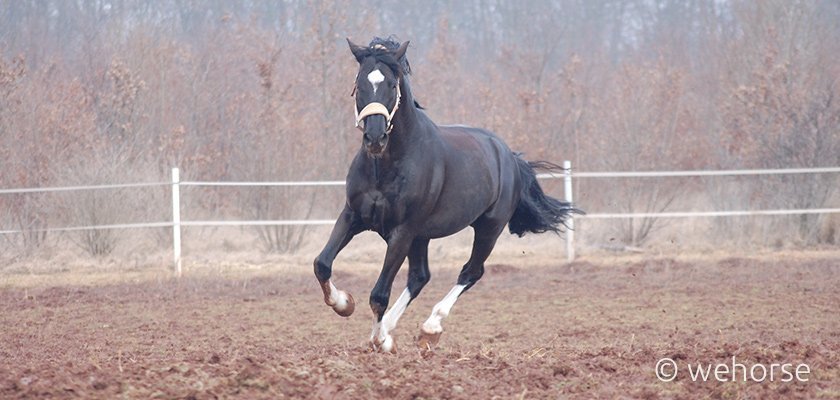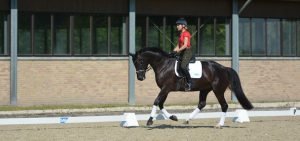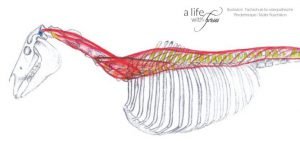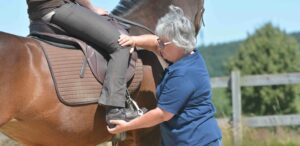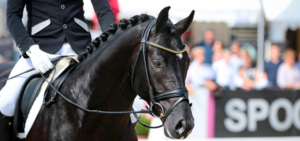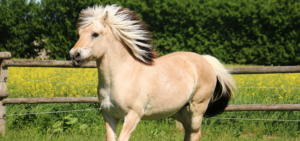Winter is a tough time for equestrians: it’s dark, cold, the indoor is full and outdoors are wet and muddy or completely frozen.
During winter the horses are more vulnerable and the risk of injury is higher.
Here are tips to help you get through winter whilst keeping your horse happy, healthy and sound. The appropriate warm-up, the right care as well as what you feed all have an impact on your horse in winter.
You will also find tips for keeping your horse motivated throughout the winter season.
Summary
- The appropriate warm-up
- Three rules for training in winter
- How much walk is necessary?
- Letting the horse free in the arena: pro & cons
- Groundwork training
- Tips for a diversified training
- Supporting the intestinal health of the horse
- Managing winter blankets
Why is the warm-up so important?
To prevent injuries, the horse must be warmed up carefully. Tendon & ligament injuries are more common when the weather is cold. It’s often due to too short warm-ups as well as the uncontrolled movement of the horse. (when it’s cold, horses tend to be fresher and want to buck).
The ground is also problematic, the paddocks & fields are often deep & muddy or even frozen. This leads to your horse slipping more easily or walking on the uneven ground can sometimes cause hoof problems.
Three things to keep in mind:
- Level your surfaces: If you don’t want the ground to become hard and uneven during the really cold periods, it’s better to level it before the frosts hit. The ground will freeze evenly and it’s much safer for the horse legs.
- Take enough time for walking: In winter, horses need time to warm up, especially if they have been standing in the box for a long time. Putting the horse in the walker, on a treadmill or simply walking him in hand before riding or turning out will help prevent the risk of injury.
- Warm yourself up before riding: Your riding seat, as well as your overall suppleness and flexibility, will benefit greatly if you warm up before riding. You will be better able to follow the movements of your horse and ride more fluidly. Walking with your horse in hand for 10 to 15 minutes is a great option to get both of you ready for the training session!
If you want to do even more, a small warm-up training session is ideal, for inspiration you might check out Bettina Hoy.
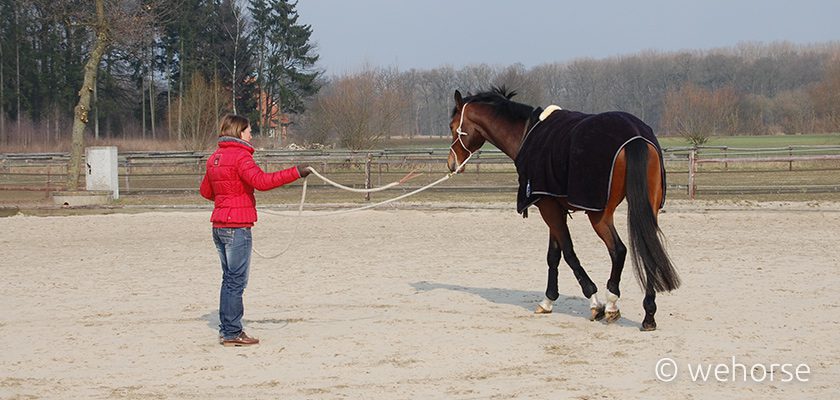
How much walk is necessary?
Movement is important, everyone knows that. But how much is actually necessary in winter?
For veterinarian Elke Küppers `One and a half to 2 hours of exercise, especially at walking pace, is essential´.
The working phase is of course much shorter but the amount of walk being done is important. The only exception: those who keep their horses in stables where the horses have free access to paddocks, or live outdoors, can do less. Another rule: 15 minutes of walk is crucial before asking the horse to trot or canter.
Letting the horse free in the arena: pro & cons
If your horse can behave as if he was being lunged then it’s fine. If you know that the horse might be a little fresh and run around, we recommend you apply the same rules as for riding: give him enough time to warm up beforehand by walking him, in hand, in the walker or on the treadmill.
What about groundwork?
Working in hand is a great way to prepare your horse before riding but can also be used as a full training session which will bring diversity to your training. For Kathrin Roida it’s a great option as there is far less risk of the horse jumping uncontrollably forward or bucking as can happen while lunging.
`It’s a great way to warm up, especially if you spend many hours in a cold indoor arena.´
Kathrin Roida shows you how to include work in hand in your training step by step. She usually starts by asking the horse to step sideways around her as a good way for gymnasitcizing and stretching. Once the horse chews or snorts once or twice she will go on a larger curved line.
Her winter training tip: When walking the horse, she rarely rides straight for too long, she usually rides curved lines and includes some leg yielding to warm up the horse physically and mentally.
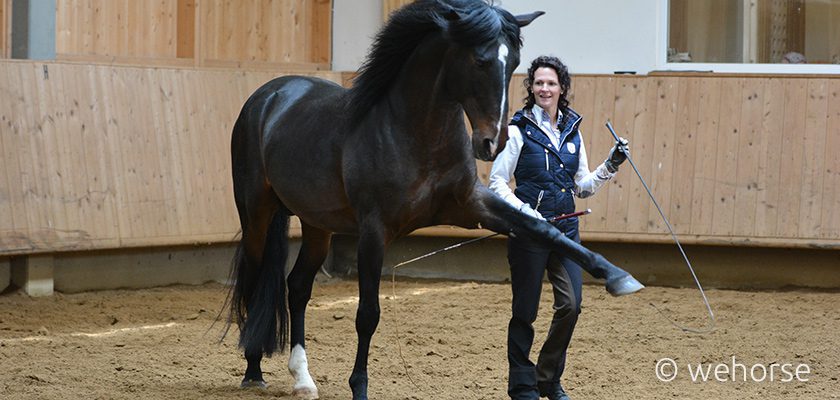
How to diversify your training in the indoor arena?
Just riding around and around and around in the indoor during the winter months will probably frustrate even the most laid back of horses. Training with ground poles and cavalettis can help you vary your training. You can use them to create different setups depending on your level and what you want to work on. Ingrid Klimke incorporate cavaletti training into her daily work as well, regardless of discipline or level.
During the warm-up, walking over cavalettis is also a great way to loosen the back of your horse and warm up his muscles.
Keep in mind that going outdoors for a hack, or if the ground allows, for a trot or gallop, is a great way to keep your horse motivated and your training fun.
How to support the intestinal health of your horse?
Basically, a strong immune system is always connected to the conditions in which horses are kept (dust? enough fresh air? exercise? stress in the herd?) and the health of the horses intestines. High quality, dust free hay is necessary, as is the appropriate amount and type of hard feed. All these factors have an effect on the immune system. The horse becomes more susceptible to ill health if it has to contend with inappropriate feed or daily stress.
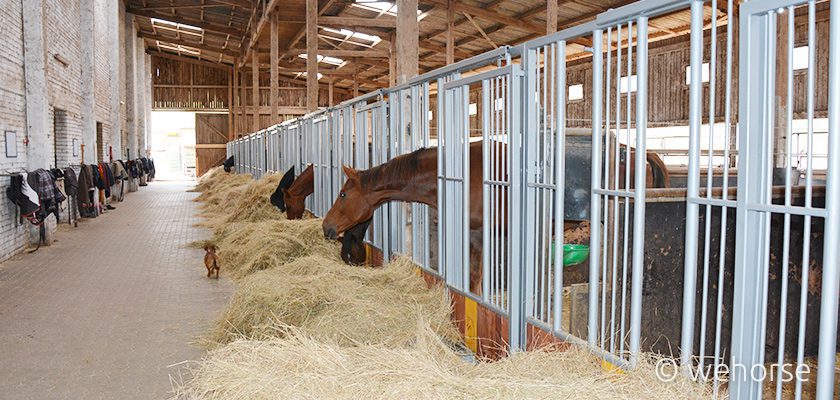
How to support your horse with winter blankets?
Horses are very well adapted to managing their own body temperature, however, clipped horses, older horses or horses recovering from illness may need help keeping themselves warm. There are many types of blankets available, from stable blankets to turnout, all for various temperatures. Take a look at what fits best for your horse’s living conditions and his needs, a thin skinned thoroughbred will most likely be miserable standing out in the snow or rain without a good waterproof turnout blanket, whereas the typical friesian is probably quite happy without any blankets in such a situation.
If you want to learn more about the topic of blanketing your horse, check out our dedicated article: To Blanket or not to Blanket? The Ultimate Horse Blanket Guide and Compendium.

